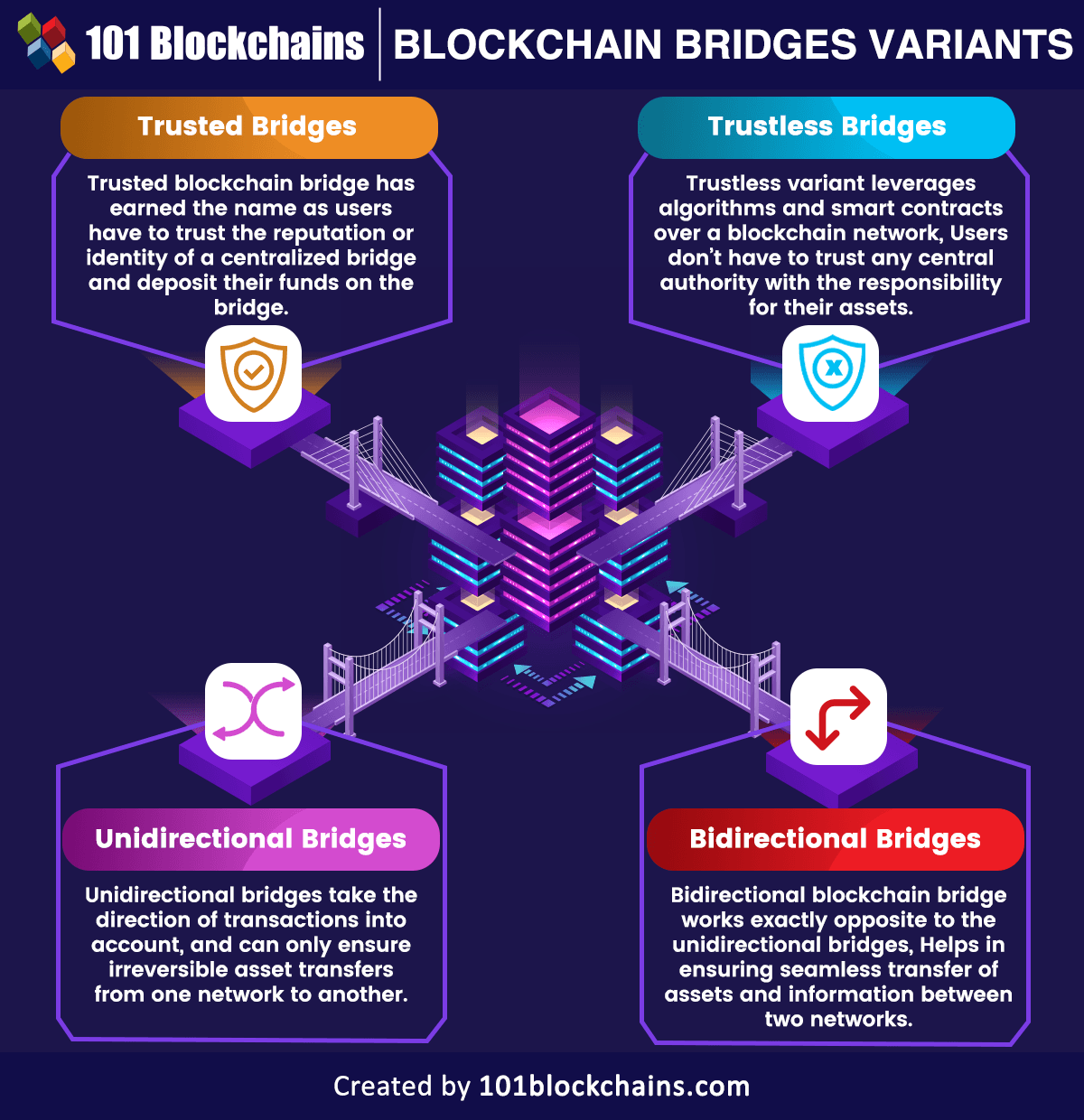What Are Cross Chain Bridges And How Do They Connect Blockchain Networks
Imagine a world where different countries speak different languages, and each language has its own set of rules and cultures. Now, imagine wanting to communicate with someone from a different country, but the languages you speak are incompatible. This is similar to the challenge that different blockchain networks face when trying to interact with each other. Each blockchain has its own unique architecture, consensus mechanism, and set of rules, making it difficult for them to communicate and transfer assets between networks.

- The Future Of Blockchain In Financial Inclusion
- Unlocking The Secrets Of Bitcoin Mining: A Beginner’s Journey
- The Role Of Tokenomics In Cryptocurrency Value Creation
- Diversifying Your Crypto Portfolio With Stablecoins
- Unleashing The Power Of Liquidity Mining: Unlocking DeFi’s Hidden Gem
This is where cross-chain bridges come in – a technology that enables the free flow of assets and data between different blockchain networks. In this article, we’ll delve into what cross-chain bridges are, how they work, and their significance in the blockchain ecosystem.
A cross-chain bridge is a protocol that allows for the transfer of assets, such as tokens or cryptocurrencies, from one blockchain network to another. It’s essentially a translator that enables different blockchain languages to communicate with each other, facilitating the exchange of assets and data between networks. Cross-chain bridges can be thought of as a " highway" that connects different blockchain networks, allowing them to interact and exchange value.
So, how do cross-chain bridges work? There are several types of bridges, but we’ll focus on the two most common ones: trust-based bridges and trustless bridges.
Trust-based bridges rely on a centralized authority to facilitate the transfer of assets between networks. This authority, often a third-party custodian, holds the assets in escrow and verifies the transfer before releasing them to the recipient’s blockchain network. While trust-based bridges are simpler to implement, they come with a trade-off – they require users to trust the central authority, which can be a single point of failure.
Trustless bridges, on the other hand, use cryptographic algorithms and game theory to facilitate the transfer of assets without relying on a central authority. These bridges use complex smart contracts to lock assets on one blockchain network and release an equivalent amount on the recipient’s network. Trustless bridges are more secure and decentralized, but they require more complex infrastructure and can be more expensive.
The benefits of cross-chain bridges are numerous. They enable the creation of a more interconnected blockchain ecosystem, where different networks can interact and exchange value seamlessly. This, in turn, fosters innovation and growth, as developers can build applications that span multiple blockchain networks.
Cross-chain bridges also enable the transfer of assets between networks with different consensus mechanisms, such as proof-of-work and proof-of-stake. This allows users to take advantage of the unique features of each network, such as scalability, security, or lower transaction fees.
Moreover, cross-chain bridges can facilitate the creation of decentralized finance (DeFi) applications that operate across multiple blockchain networks. This enables users to access a wider range of financial services, such as lending, borrowing, and yield farming, without being limited to a single network.
In conclusion, cross-chain bridges are a game-changer in the blockchain space. They enable the free flow of assets and data between different blockchain networks, fostering innovation, growth, and a more interconnected ecosystem. While there are challenges to overcome, the benefits of cross-chain bridges make them an exciting technology to watch in the future.
As the blockchain ecosystem continues to evolve, we can expect to see more advanced cross-chain bridges that enable seamless interactions between different networks. Whether you’re a developer, investor, or simply a blockchain enthusiast, understanding cross-chain bridges is essential to navigating the complex and ever-changing world of blockchain technology.
